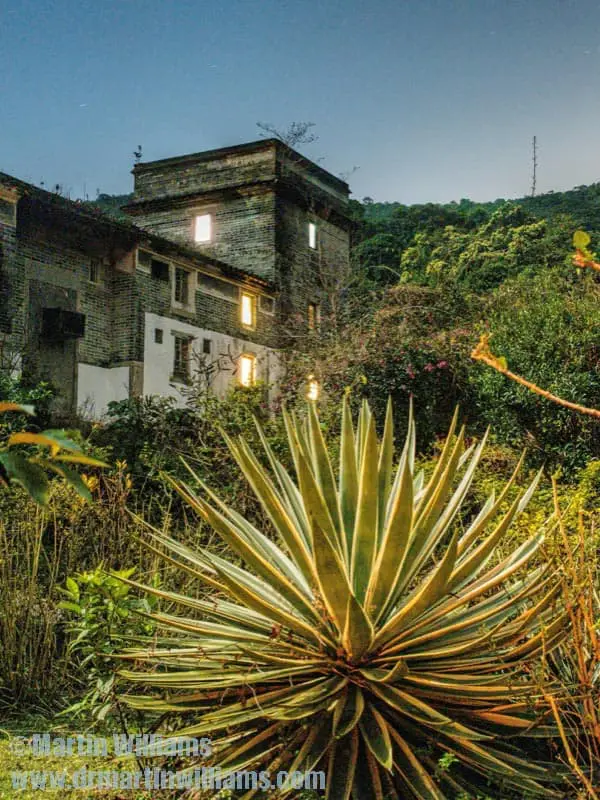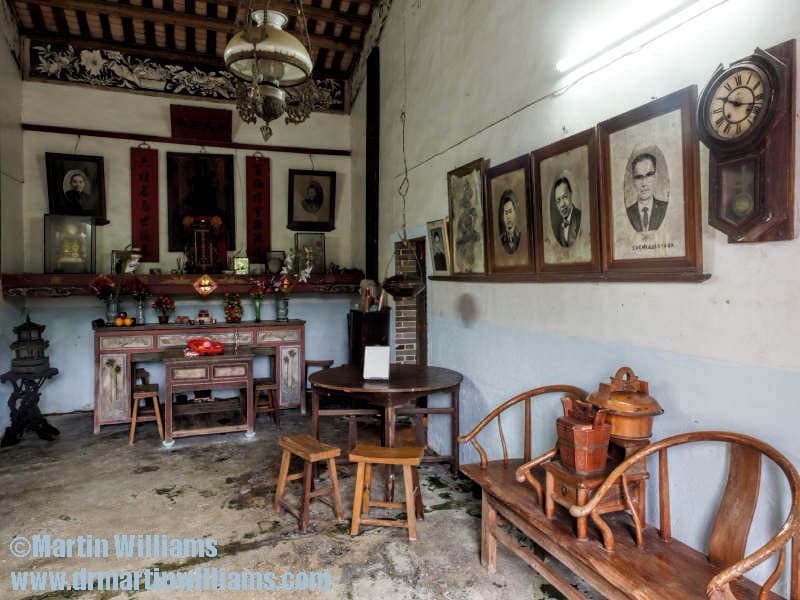Pak Sha O, a village in the wilds of the Sai Kung Peninsula, seems almost suspended in time. As you approach on foot – there’s no road access – trees hide it from view. Pass through these, and you see white-painted, two storey houses, mostly arrayed in terraces on gently sloping land.
Explore – quietly!, and you’ll find grassy gardens, stony ruins adjoining sturdy buildings, renovation work underway. Though it’s like a folk museum, there are homes equipped with all mod cons.

Pak Sha O was built by Hakka farmers around the mid-19th century. In the 1970s, water diversion to a new reservoir made farming tougher, and most villagers left for new lives in the city and overseas. Two old couples and a man remained by 1985, when the village looked destined to crumble. But ex-villager Mr Lau was then in the UK, and told two neighbours, “I’ve got a house you could live in. Needs a bit of work.”
The couple were Alan and Lai Sheung Pickford, who had met in Hong Kong. With Alan retiring, they were considering life overseas. Both spoke Cantonese, and they rented Mr Lau’s house. Finding it needed more work than he indicated, they added a kitchen, bathroom, and proper bedroom.
“I thought the area was like Snowdonia National Park,” the couple’s daughter, Shirley, recalls of visits to their home. “There was a lovely feeling of being right out in countryside; a complete contrast to the hurly burly of the city. You’d hear the croaking of frogs, and see fireflies – it was marvellous.”
By 1995, when uncertainties over Hong Kong’s future prompted the Pickfords to leave, other outsiders were moving in. American Tom Goetz signed the lease Mr Lau’s house before he even saw it; and on first arriving thought, “Wow – terrific!” Though Goetz has since lived elsewhere at times, he and wife Lauralynn are among the 21 current residents.
Around 15 minutes’ walk away, all that remains of a sibling hamlet, Pak Sha O Ha Yeung, is an impressive family house with adjacent ancestor’s hall, maintained by a Briton, Toby Emmett. He first rented as a holiday house in 1980, and began living there after retiring, in 1998. “I’ve hiked much of Hong Kong, and this is one of the last unspoiled valleys,” he says.

The tranquillity may be swept away, as a developer has bought parcels of land, and there are plans for hundreds of houses at Pak Sha O and nearby. But there is growing support for conservation, including from some former villagers. “We appreciate what Toby has done with this house,” says Kenneth Yung, who was born in Ha Yeung, and is among family members renting to Emmett. “I hope we can keep the environment,” he adds.
Historian Patrick Hase, among the premier chroniclers of life in the New Territories, agrees. “I consider Pak Sha O and Ha Yeung to be two of the finest villages in the New Territories, and well worth preserving,” he says via email. “The whole Pak Sha O area is just superb.”
